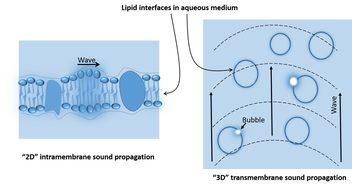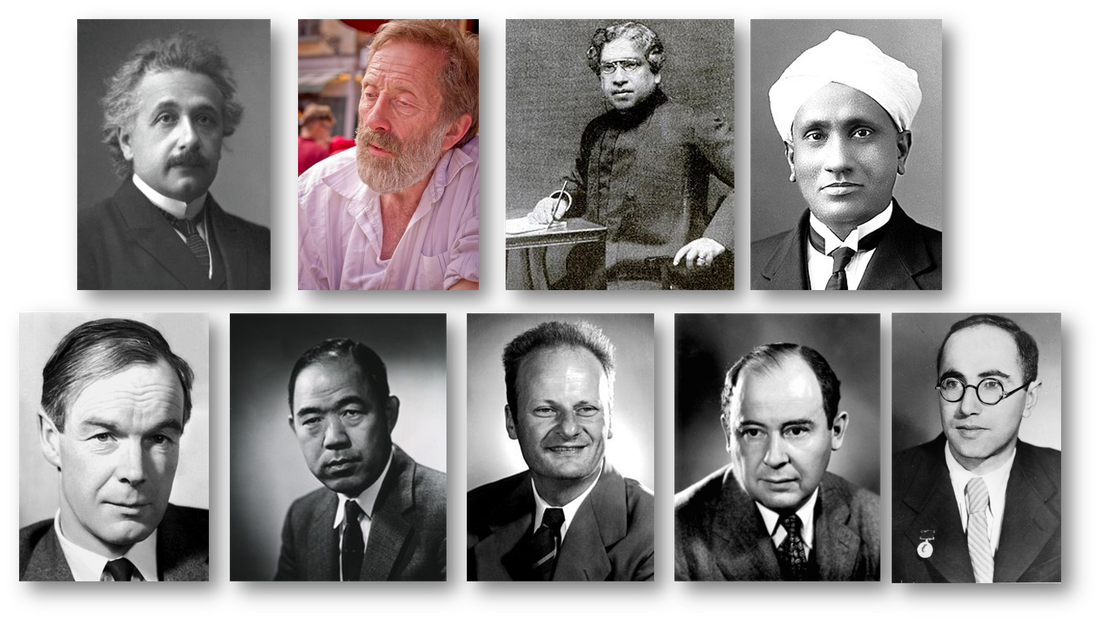The big picture

Controlling a system requires predicting its behaviour under different conditions, i.e. to have a model that tells us what needs to be changed and by how much to get a desired outcome. There are at least two approaches to building such models. The more popular approach is to imagine the system as the sum of its structural parts, like the components of a machine. The assumption is, if we understand each individual part and how they interact with each other, we can understand and hence build the original system, one part at a time. Molecular dynamic simulations are an example of such an approach applied to biology. While this approach is very intuitive when applied to simple systems, including the machines that surround us; the approach has limitations when applied to biological systems. Its not just a question of having bigger and better computers that can crunch phenomenal molecular complexity of the living matter comprising biological system. The problem is demonstrably more fundamental, i.e. a system is not necessarily a sum of its parts!
In contrast, the behaviour of a system can also be predicted from a measurable property of the system, based on analytical relations derived directly from the laws of nature. For example, the speed of sound can be predicted from the compressibility of a material without knowing its molecular composition. The approach than predicts only those phenomenon that are allowed given the constraints of nature. For example, based on the fact the biological membranes have well defined thermodynamic susceptibilities, it was predicted that "2D" sound waves (see figure) must propagate within them, which was shown to be the case. However, how can such an approach account for biological complexity in a meaningful way? To apply such an approach to biology will require measuring thermodynamic properties, such as specific heat and compressibility, locally, in-situ, and at the relevant time scales. However, we lack the technology to perform such measurements, meanwhile scientific initiatives towards understanding complex biological systems focus mainly on the structure and not the state as the basis for function. Therefore, my aim is to build tools based on fundamental acoustic and photo-physics that will enable the implementation of a state based framework in biology. Furthermore, the same tools will also allow control over the state of the system and hence potentially its biological function. With a strong focus on the fundamentals to device new tools and methods for controlling the state of living matter, I am also pursuing various applied themes simultaneously with applications in biomedical, environmental and computations sciences.
In contrast, the behaviour of a system can also be predicted from a measurable property of the system, based on analytical relations derived directly from the laws of nature. For example, the speed of sound can be predicted from the compressibility of a material without knowing its molecular composition. The approach than predicts only those phenomenon that are allowed given the constraints of nature. For example, based on the fact the biological membranes have well defined thermodynamic susceptibilities, it was predicted that "2D" sound waves (see figure) must propagate within them, which was shown to be the case. However, how can such an approach account for biological complexity in a meaningful way? To apply such an approach to biology will require measuring thermodynamic properties, such as specific heat and compressibility, locally, in-situ, and at the relevant time scales. However, we lack the technology to perform such measurements, meanwhile scientific initiatives towards understanding complex biological systems focus mainly on the structure and not the state as the basis for function. Therefore, my aim is to build tools based on fundamental acoustic and photo-physics that will enable the implementation of a state based framework in biology. Furthermore, the same tools will also allow control over the state of the system and hence potentially its biological function. With a strong focus on the fundamentals to device new tools and methods for controlling the state of living matter, I am also pursuing various applied themes simultaneously with applications in biomedical, environmental and computations sciences.
Key findings from my research so far:
|
First evidence of action potential like sound waves in lipid monolayers: The research showed that compression waves in single molecule lipid film as a model for neurons, acquire same physical characteristics as that of action potentials. These waves are only excitable near a phase transition, propagate as a solitary wave with the speed of sound at the interface, which is very similar to the conduction speed of action potentials in unmyelinated. The original publication is open access at: Evidence for two-dimensional solitary sound waves in a lipid controlled interface and its implications for biological signalling, Journal of Royal Society Interface 2014. Also, a popular media summary was published by phys.org : Solitary acoustic waves observed to propagate at a lipid membrane interface.
|
|
|
The compression waves in lipid monolayer, shock physics par excellence: The remarkable action potential like properties of compression waves in lipid monolayers are shown to result from some lesser known but classical aspects of the general theory of shock compression. Laid down in the seminal works of Hans Bethe, the research showed that the curvature (slope of slope) of the state diagram is the key to the all-or-none nature of these waves near phase transition. Usually materials become hard upon compression, which means the speed of sound in the material increases with compression. This is critical for the stability of a shock wave. However, this is not true for a material that undergoes phase transition upon compression. The material first becomes softer before hardening again. This flop-flop in compressibility (changes in the signs of curvature of the state diagram) is behind the baffling nature of sound waves in the lipid membranes. The research was published in Physical Review E, 2015 and the preprint is freely available on ArXiv. The research was also highlighted by a popular article on Phys.org.
|
|
|
Two compression waves in lipid monolayer annihilate each other upon collision: Yet another property of action potentials that used to be the main criticism of the acoustic theory of nerve pulse propagation, given sound waves were never known to be capable of annihilating each other. With this research we established all the key physical characteristics of the wave phenomenon that is action potential also for the shock waves in the lipid monolayers. The research was published in June 2018 and is openly available at the Journal of Royal Society Interface.
|
|
Fluorescence as a thermodynamic observable: The research has established that characteristic properties of fluorescence emission such as intensity, polarization, and spectrum depend on the thermodynamic properties of the local environment of the dye molecule (i.e. dielectric and heat capacity). While my approach has been general, I have established these relations in lipid membranes in particular. Therefore now it is possible to estimate the changes in the heat capacity of lipid membranes directly from the steady state emission spectrum of the dye which act as local calorimeter. The technique was instrumental in measuring the above mentioned acoustic phenomenon in lipid membranes. The state dependence of intensity and polarization was published in 2013 in PloS One and the state dependence emission spectrum was published in 2018 in Soft Matter.
|
Thermodynamics of cavitation in lipid nanoparticles: Research was highlighted by the APS Physics Magazine https://physics.aps.org/articles/v12/s55. Quoting an excertp from the synopsys, " Ultrasound has long been an important tool for medical imaging. Recently, medical researchers have demonstrated that focused ultrasound waves can also improve the delivery of therapeutic agents such as drugs and genetic material. The intense waves trigger the rapid formation of bubbles that make cell membranes—as well as synthetic membranes enclosing drug-carrying vesicles—more permeable. However, the bubble-membrane interaction is not well understood. New experiments by Shamit Shrivastava and Robin Cleveland from the University of Oxford, UK, show that bubbles form more easily when membranes are at a melting transition."
|
|
Other projects from the past
|
2D shock waves in a lipid monolayer and action potentials Provided first evidence of 2D solitary shock waves in mono-molecular lipid films. They exist near a phase transition of the lipid film and behave like action potentials, i.e. they are electro-mechanical waves with a threshold for excitation, are all-or-none and annihilate upon collision. |
On measuring local thermodynamic properties from fluorescence Established relationships between the thermodynamic state of the lipid interface and the intensity and emission spectra of membrane dyes. Also characterised relationship between the state of the interface and forster resonance energy transfer between donor and acceptor dyes. |
Interaction of lipid membranes with ultrasound and shock waves Investigated the dynamic state changes in lipid vesicles exposed to shock waves based on changes in fluorescence spectra of membrane dyes. |
|
Thermodynamics of Cavitation and Sono-luminescence Investigated the thermodynamic state of the interface during cavitation providing new insights into the role of fluctuations and interface entropy. Collaborating with Prof. Roland Netz for computational modelling. |
Mechanisms of sonodynamic therapies with micro-bubbles Investigating the mechanism of reactive oxygen species generation via therapeutic ultrasound. In collaboration with Prof. Eleanor Stride. |
Thermodynamic properties from Raman and photoacoustic spectra Investigating the relationship between Raman and photoacoustic spectra of lipid membranes as a function of the thermodynamic state. |
|
Lipid nanoparticles for acoustically enhanced gene delivery Designed shock wave triggered lipid nano-particles for intracellular delivery of therapeutic mRNA. In collaboration with Prof. Terrence Rabbits. |
Acoustic control of bacterial colonies Optimising acoustic and environmental parameters for enhancing in-situ gene delivery in bacterial colonies for applications in industrial waste management and combating anti-bacterial resistance. In collaboration with Prof. Ian Thompson and Prof. Wei Huang |
Ultrasonic neuromodulation mechanisms Investigating the mechanisms for ultrasound induced excitability as a function of acoustic parameters. |
Researchers who inspire me suggested for further reading:
Fluctuations and light-matter interaction
- Einstein A (1910) Theory of the Opalescence of homogenous fluids and liquid mixtures near the critical state. Ann Phys 33:1275–1295.
- Einstein A (1911) On the present state of the problem of the specific heat. Abhandlungen der Dtsch Bunsen Gesellschaft 3(7):330–352.
- Einstein A (1907) Planck’s Theory of Radiation and the Theory of Specific Heat. Ann Phys 22:180–190.
- Einstein A (1909) On the Present Status of the Problem of Radiation. Ann Phys 10:183–195.
- Raman C. (1921) On the Molecular Scattering of Light in Water and the Colour of the Sea. Roy Soc Proc A 101.
- Landau L, Lifshitz IM (1980) Surfaces. Statistical Physics (Butterworth-Heinemann, Burlington,MA), pp 517–518. 3rd Ed.
- Einstein A (1901) Conclusions Drawn from the phenomena of Capilarity. Ann Phys 4:513–523.
- Kaufmann K, Hanke W, Corcia A (1989) Ion Channel Fluctuations in Pure Lipid Bilayer Membranes: Control by voltage (Caruaru, Brasil) Available at: http://membranes.nbi.dk/Kaufmann/.
- Kaufmann K (1989) Action Potentials and Electrochemical Coupling in the Macroscopic Chiral Phospholipid Membrane (Caruaru, Brasil). 1st Ed. Available at: https://sites.google.com/site/schneiderslab/research-group/literature.
- Kaufmann K (1989) On the role of phospholipid membrane in free energy coupling (Caruaru, Brasil). 1st Ed. Available at: https://sites.google.com/site/schneiderslab/research-group/literature.
- Bethe H (1998) On the Theory of Shock Waves for an Arbitrary Equation of State. Classic Papers in Shock Compression Science, eds Johnson J, Cheret R (Springer New York), pp 421–495.
- Zeldovich YB (1950) On the theory of the propagation of detonation in gaseous systems. Z Exsperim Theor Fiz 20:175–182.
- Von Neuman J (1942) Theory of Detonation Waves. Available at: http://oai.dtic.mil/oai/oai?verb=getRecord&metadataPrefix=html&identifier=ADB967734 [Accessed September 9, 2016].
- Tasaki I (1982) Physiology and electrochemistry of nerve fibers. Available at: http://www.getcited.org/pub/102145319 [Accessed December 22, 2011].
- Bose JC (1902) Response in the Living and Non-Living (LONGMANS, GREEN and CO, New York and Bombay).
